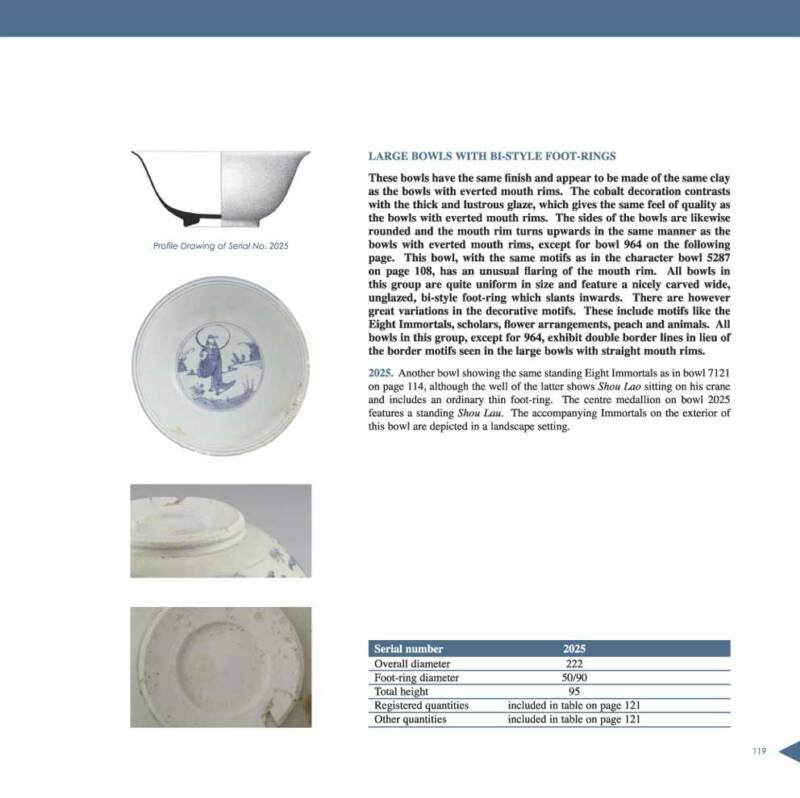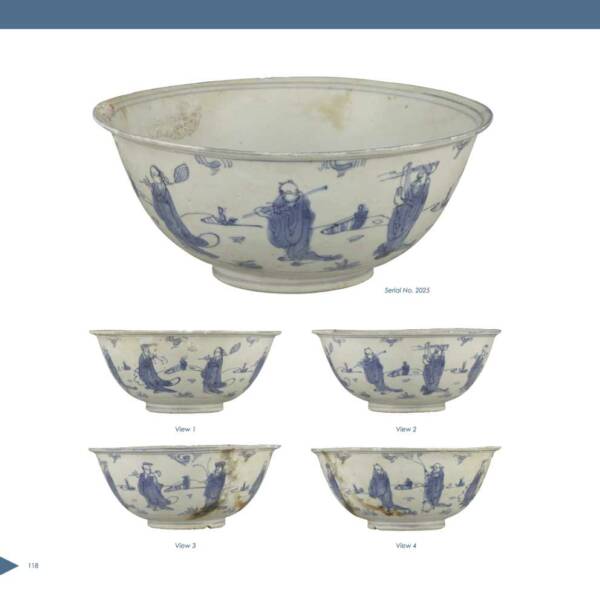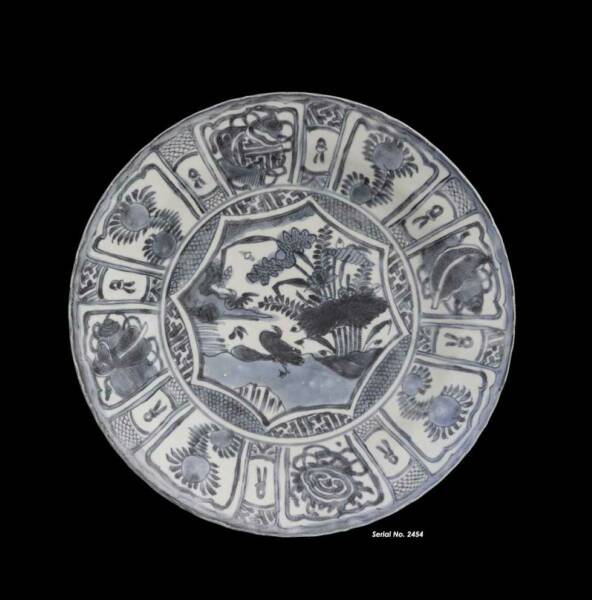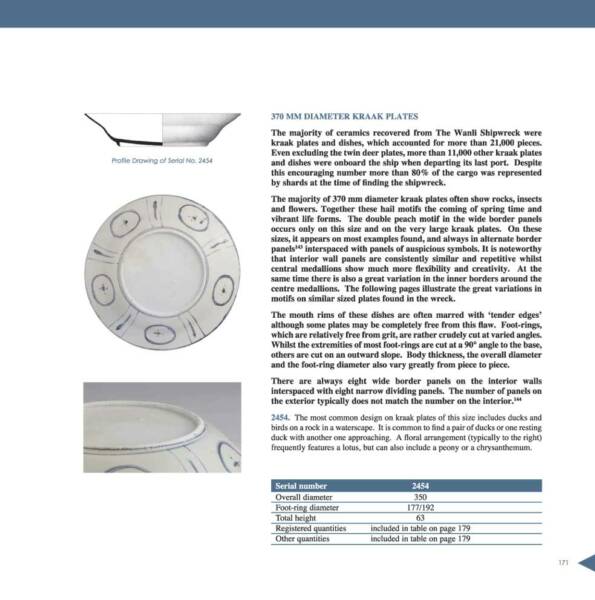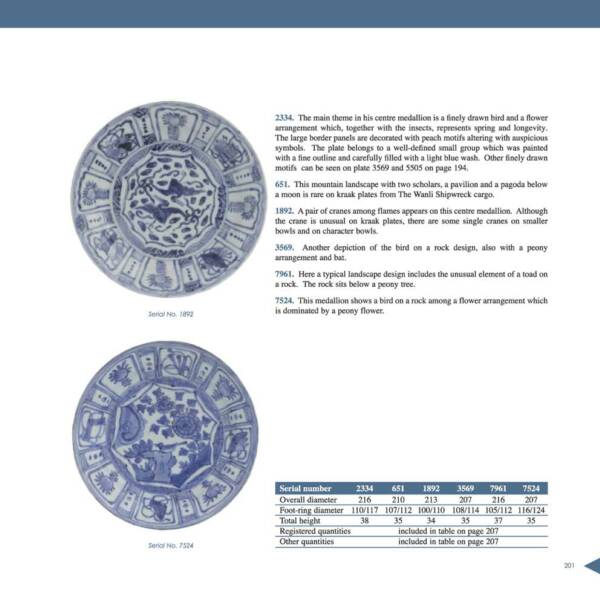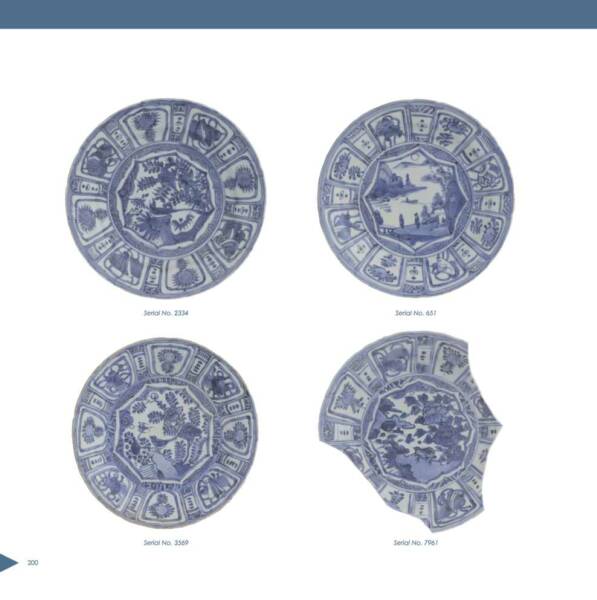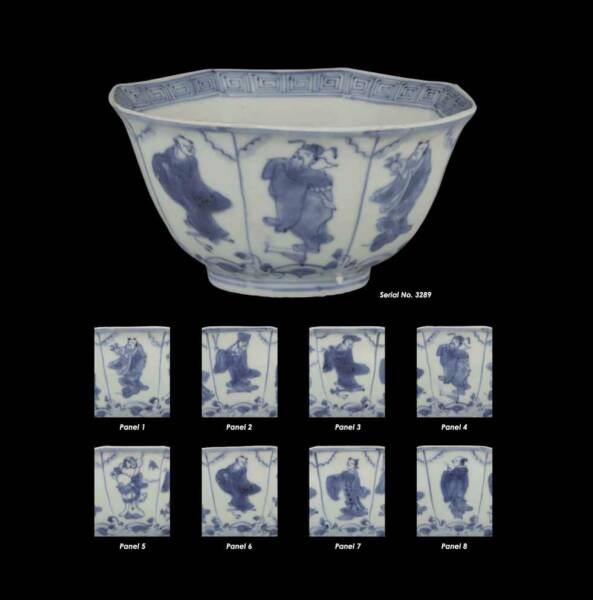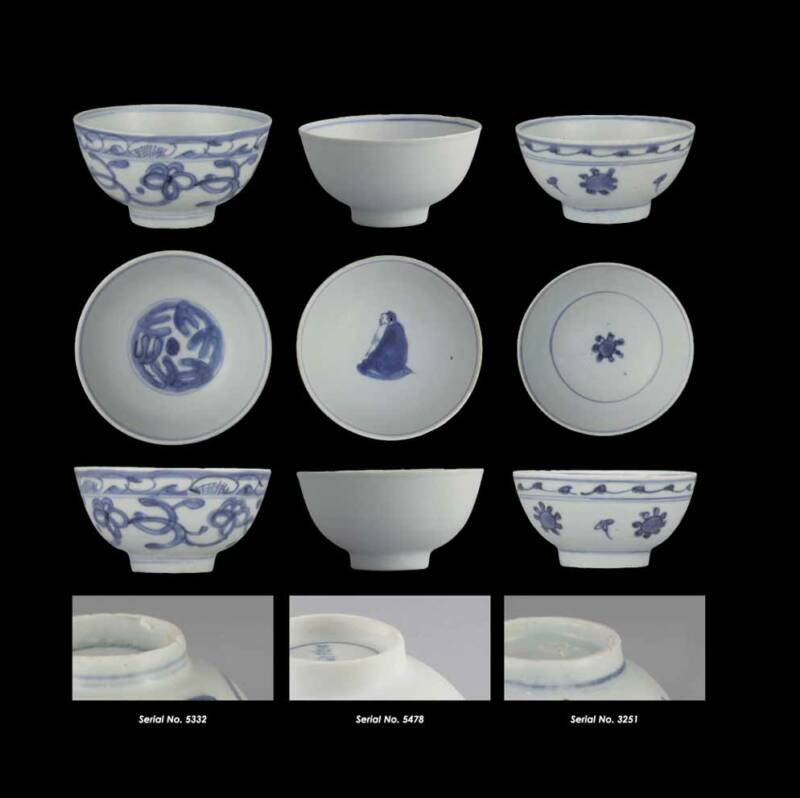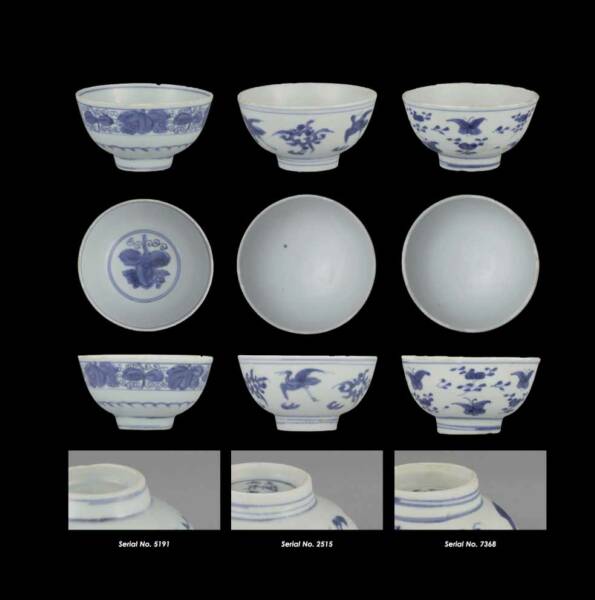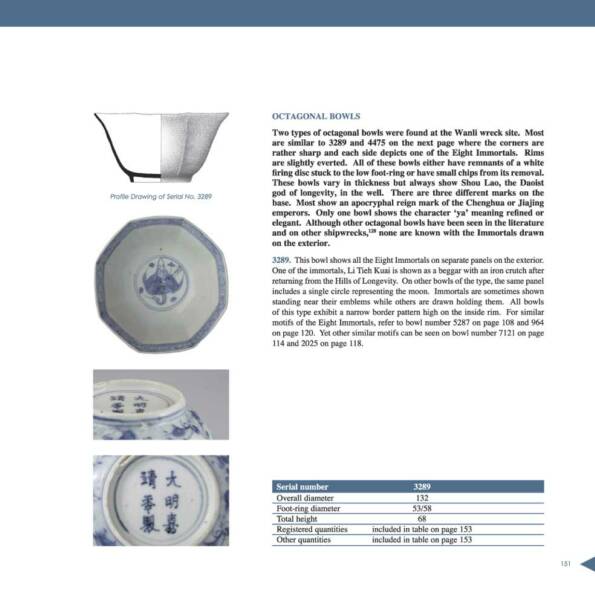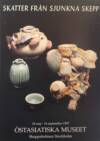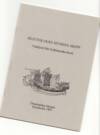27x27cm, 118 pages full of colour: photographs, black & white sketches and maps;
HARD COVER BOOK: USD. 50.00
 | ||||
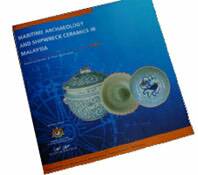
 | ||||
 | ||||
 | ||||
 | ||||
 | ||||
Marine archeology publications:
THE WANLI SHIPWRECK AND ITS CERAMIC CARGO
THE WANLI CARGO PUBLICATION
MARITIME ARCHAEOLOGY AND SHIPWRECK CERAMICS IN MALAYSIA.
Nanhai Marine Archaeology is committed to sharing information from its projects. This information is available online at: http://www.maritimeasia.ws
Exhibition catalogue: Maritime Archaeology and Shipwreck Ceramics in Malaysia by Dr. Roxanna M. Brown and the company's principal researcher; Sten Sjostrand. Published by the National Museum, Kuala Lumpur. Malaysia. (2002)
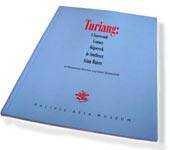
Monograph: Turiang: A Forteenth Century Shipwreck in Southeast Asian Waters written by Roxanna M. Brown Sten Sjostrand. Published by Pacific Asia Museum, Pasadena. California. USA (2000) ISBN: 1-877921-17-3
Soft cover, 64 pages, 95 coloured photographs, numerous sketches.
To order: contact Pacific Asia Museum, Pasadena.
Review: Click here
After finding, excavating or investigating seven ancient shipwrecks, the company assisted the National Museum in Kuala Lumpur to establish an exhibition showcasing artefacts from the shipwrecks. This exhibition is commemorated in a special exhibition catalogue.
Reprinted report about the Turiang: A Fourteenth-Century Chinese Shipwreck Upsetting Southeast Asian Ceramic History, written by Sten Sjostrand for the Malaysian Branch of the Royal Asiatic Society. (2002) Editor: Claire Barnes
38 pages, photographs and black and white sketches.
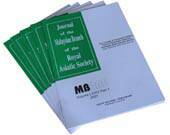
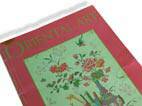
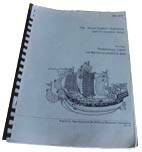
Oriental Art Magazine, summer issue 1997 containing two articles about the Xuande shipwreck and its controversial ceramic cargo. Containing an article by Dr. Roxanna M. Brown and another article by Sten Sjostrand
Draft report: Royal Nanhai and its Ceramic Cargo. Written by Sten Sjostrand.
THE WANLI SHIPWRECK AND ITS CERAMIC CARGO
When investigating The Wanli Shipwreck the porcelain cargo offered a unique opportunity to record which forms, styles
and type of decorations were being traded at the time of the ships demise. In almost every case shipwreck cargoes have
largely contributed to a better understanding about ceramic styles that were thought to follow one another and not be
contemporaneous. For this reason, the mixture of wares within a single cargo
is important, and this new catalogue attempts to show as much of the types
and their variations as possible
















MYSTERIES OF MALAYSIAN SHIPWRECKS
This book is written by the company’s principal researcher; Sten Sjostrand. It provides the background for his discovery of ten historical shipwrecks and their excavation. A lifetime’s experience with sailing and naval architecture allows Sjostrand to bring new understanding to ancient ship construction and allows him to set the ships and their ceramic cargoes in historical perspective. With ceramics from the 11th to the 19th century, Sjostrand proposes a chronology of wares not available earlier from precisely dated ‘time capsules’ sites. Each of Sjostrand's ten shipwrecks, their cargo composition and detail of the ships structure is presented in this unique "coffee table" book.
Malaysia's Minister for Culture, Arts and Heritage; Datuk Seri Utama Dr. Rais Yatim was kind enough to write the Foreword praising present archaeological achievements and providing hopes for continued success.
Another section of the book is written by Dato’ Dr. Adi Taha, the Director General of Malaysia’s Department of Museums
and highlights the Malaysian government’s involvement in maritime archaeology and the successes working with
Sten Sjostrand. A final contribution is made by Samsol Sahar, the curator of the Department’s under water archaeology
team, and his venture into shipwreck excavations.
"The maritime archaeology of Sten Sjostrand has led to major advances in the study of Asian trade and trade ceramics in Southeast Asia. His meticulous documentation of a series of ten shipwrecks from the 11th to 19th centuries reveals the early dominance of Chinese trade ceramics, a subsequent loss of the Chinese monopoly in the late 14th century when Southeast Asian ceramics entered the market, the basic parameters of the Ming gap shortages of the 14th-15th centuries, and a resurgence of Chinese wares in the 16th and 17th centuries. Just as important, Sjostrand freely shares
the information from his discoveries.
Researchers are welcome at his
headquarters where he documents his
finds and patiently answers the queries
of others. A lifetime’s experience with
the sea and sailing allows Sjostrand to
bring new understanding to ancient ship construction, and his voluminous reading allows him to set the ships and their cargoes in historical perspective. This publication delivers the sort of precise data that will stand the test of time and be mined by future scholars for studies to come on Asian history. The thoroughness displayed in this catalogue is a testament to his passion and devotion to mapping ancient maritime trade and trade goods during more than two decades of dedicated work"
Dr. Roxanna B. Brown
The Wanli Shipwreck and its Ceramic Cargo:
This publication sets new standards for the reporting and analysis of shipwreck sites in Southeast Asia. Its two most important elements are a full accounting of the archaeological excavation itself and then an inventory of the artefacts recovered. Significantly, the artefacts include a major cargo of some 37,000 pieces Chinese kraak porcelain that the authors (after thorough analysis) assign to +/- 1625. The solid archaeological context for the ceramics adds significant new data to studies of 17th century ceramics that now requires previous studies be reviewed and refined. Besides 650 full color illustrations, there are drawings, maps and illustrations of the site, both ceramic and non-ceramic artefacts, and ship parts and fittings. One section systematically reviews the symbolism of the blue and white designs, and another gives the historical background for their production in China. The report documents a fruitful relationship between Malaysia’s Department of Museums and Sten Sjostrand of Nanhai Marine Archaeology that began in the early 1990s. The excavation of The Wanli Shipwreck in Malaysia’s territorial waters is only the latest chapter in their joint efforts to illuminate history through projects in maritime archaeology. The accumulated details of this shipwreck site reveal a surprising and explosive history – the date, the historical circumstances, the mounds of shattered porcelain associated with broken and missing hull planks lead intractably to the theory that the vessel was a Portuguese-managed ship that sank in a sea battle with Dutch forces that were seeking to control the port of Melaka.
Dr. Roxanna M. Brown
SOUTHEAST ASIAN CERAMIC MUSEUM NEWSLETTER. Volume IV Number 6. November -December 2007:
Stunning report sets new standard
AFTER MORE THAN 30 years being pitifully thankful whenever any report at all appeared, and being quietly disappointed by one incomplete report after another, I am ecstatic that this new volume sets a welcome high
standard. It is presented in full color, with all the 234 types of ceramics in the cargo documented, an inventory of all the non-ceramic items, description of the archaeology, and a complete account of the ship’s structure and the state of its physical remains. Most important, the numbers of each type of artifact are stated or at least estimated. With numbers,
many welcome analyses become possible. The wreck was originally given the site name Wanli by Sten Sjostrand because the jar that led to the search was similar to one on the San Diego (1600) wreck from the Wanli (1573-1619) reign. Analysis of the recovered cargo however led to ‘about 1625’ as a more likely date for the wreck. RMB
THE ONLY PLACE WHERE YOU CAN BE SURE TO BUY GENUINE ANTIQUES
Nanhai Marine Archaeology Sdn. Bhd. was incorporated on the recommendation of the Malaysian authorities. This was done in order to formalize and to expand on the company’s researcher’s extensive knowledge of Asia’s ceramic developments and maritime trade.
The company’s researchers have been engaged in the search for historical shipwrecks for more than two decades and another decade researching maritime trade. Most of this work is concentrated to the South China Sea, a virtual highway for ancient shipping linking China to India, the Middle East and Southeast Asia in an extensive maritime trade system. This ancient trade started sometime around the 4th century and lasted well into the 19th century.
Following a successful shipwreck discovery, the company obtain a government permit to excavate the wreckage, and then carry out detailed marine archaeological procedures in recovering the artifacts, mapping the ship's remains and securing other data for future research. After each concluded project and following conservation of recovered artifacts, we search for and pinpoint ruined kiln sites and compare its wasters with the recovered ceramics until we are satisfied we located the place in which the shipwreck pottery was made centuries earlier.
As such we have precisely located a kiln sites in Sisatchanalai, northern Thailand in which our Royal Nanhai and the Nanyang shipwreck celadon ware was made around AD. 1380-1460. (See videos on: http://www.ming-wrecks.com/photopage.html ) Other kilns was located in Sukhothai where production wasters matched the fish and flower plates found on the Turiang and the Longquan shipwreck. These unique underglaze decorated wares was made at those exact kilns 600 years earlier! Our latest shipwreck cargo; The Wanli Shipwreck, of Chinese blue and white porcelain, was likewise pinpointed to the Guangyinge kiln site in Jingdezhen, China. (See video on: http://www.ming-wrecks.com/photopage.html )
Our arrangement with the Malaysian authorities is such that we finance all operations and train young Malaysian nationals (on our initiative) in maritime archaeology and related research. After giving all unique and single artifacts and thirty percent of all recovered items to the National Museum (and assisting with exhibitions of artifacts from each project) we are allowed to sell our portion of the recovery to finance future projects. The findings from ongoing research and the compilation of reports, books and catalogues are available on these pages as well as on a separate Internet site: http://www.maritimeasia.ws
Due to the unquestionable authenticity and precisely dated shipwreck pottery, many International Museums now display our shipwreck pieces as reference material.
The artifacts sold on this website are therefore legally and properly excavated and can be supplied with an export permit from the Department of Museum in Malaysia should this be required. This unique working arrangement makes us one of the few Internet sellers that sell from own excavation and issues a meaningful Certificate of Authenticity with every artifact with a serial number.
So, if you are interested to purchase some of our Antique porcelain, old time pottery or other shipwreck artifacts from the Song dynasty, Ming porcelain or Chinese blue and white porcelain or the famous Yixing teapots, you can rest assured that every piece is excavated through proper archaeology by our own staff. We do not sell anything that is not excavated by ourselves or properly recorded and researched before offered for sale so every piece comes with the “Best possible provenance”
WE ENCOURAGE YOU TO EMAIL OUR PRINCIPAL RESEARCHER; Sten Sjostrand SHOULD YOU HAVE ANY QUESTIONS ABOUT YOUR POSSIBLE PURCHASE
The catalogue includes a Message by the Malaysian Minister for Culture, Arts and Heritage: Datuk Seri Utama Dr. Rais Yatim
and a Foreword by Dato' Dr. Adi Haji Taha, the Director General of Department of Museums, Malaysia
Sample pages
27 X 27 cm, 360 pages. More than 650 color photographs, sketches, tables and maps. High quality (150 gm) paper.Total weight of the book is a hefty 2.5 kilo !!
Comments from buyers of: The Wanli Shipwreck and its Ceramic Cargo
Dear Sten,
We never met, and so I am glad to be able to establish contact this way. First, let me tell you how much I value your Wanli Wreck publication ! Very useful, well produced, with attention to details and based on proper scholarly approach. It has become indispensable in my private library! Professor Christiaan Jorg, Leiden University. Holland
--
Thank you for your book. Its contents is extremely important and very helpful to my research. I am looking forward to meet you again in the spring of 2008 and exchange our viewpoint about the excavation of Guanyinge site. I will mail the report and photos of our excavations to you as soon as possible. Wang Guangyao. Research fellow, The Palace Museum, Beijing. China
--
Dear Sten,
I just received the Wanli book, thank you very much! It is very impressive just on first sight and I think it certainly sets a new standard for documentation of shipwreck ceramics-it looks better than many books written by researchers who were trained to be professional archaeologists from their young ages. Dr. Baoping Li. Research fellow at University of Queensland
--
Sten,
The book arrived extremely swiftly after it had been ordered and in perfect condition. It is both a handsome volume and one impeccably presented from the point of view of scholarship. We are delighted to have it and it is a significant asset in our small library. Dr. Stephen Davies. Hong Kong Maritime Museum
--
It is marvellous and unique. Congratulation. I guess special books are only written by special people!
Nicholas, South Africa.
_
The book arrived on Friday at the post office but I only recieved it on Sunday. It is an absolute treasure! Very very beautifull and most well layed out! Fantastic! Michael n Sonja, Namibia
_
Yes...I got the catalogue and it is spectacular. You did an amazing job!!!! Dave Crooks, USA
_
Dear Sten - yes, the book has arrived and i think it is an extremely well documented book of such a large find complex. I am glad you choose to use the same type of drawing as we did in the Witte Leeuw catalogue. The details of the shards and the measurements etc. are also very good. I think it is a very important asset to the overal knowledge of this type of ware. Good luck wih your book! Greetings, Christine Ketel, England
_
It’s a very detailed work and I give you my congratulations for the text and for the illustrations. Antonio Marcelo. Portugal
I have received your book and I must say it is by far the best published porcelain cargo I have ever seen! You and your friends have done a very good job. In the comming year I will write a small article about this book in Vormen uit vuur (www.vormenuitvuur.nl). This is the leading magazine about historical pottery in the Netherlands (I am one of the editors). I will also send you some pictures soon from the items I have bought from you. They are on display in Museum Boijmans Van Beuningen in Rotterdam right now. Sebastiaan. S. Ostkamp. Holland
Fong Peng Khuan for ARTS OF ASIA:
THE WANLI SHIPWRECK AND ITS CERAMIC CARGO by Sten Sjostrand and Sharipah Lok Lok bt. Syed Idrus, published in 2007 by Nanhai Marine Archaeology Sdn. Bhd. in collaboration with the Ministry of Culture, Arts and Heritage Malaysia and the Department of Museums Malaysia. Designed by E-Magineers (M) Sdn. Bhd. 360 pages. 650 full colour illustrations. 4 maps. Bibliography, Index. ISBN 967-9935-74-4. US$80 (hard cover).
At first glance, it seems like a coffee table publication but you cannot judge this one by its cover and size. A heavy tome and obvious labour of love, this 360-page book is about the 17th century porcelain laden shipwreck salvaged in Malaysia off the shore of Terengganu state near Tenggol island in the South China Sea from 2004 to 2007.
According to the book, the Portuguese had acquired the chinaware and pottery cargo at their Chinese enclave in Macau before the ship set sail for Melaka (Malacca) or Batavia (present day Jakarta) around the year 1625. An ill-fated voyage, the ship never arrived at its intended entrepot destination. Sunk in battle, it laid buried in the seabed until found almost 400 years later. Being a complete cargo from its point of origin adds to its importance as a perfect time capsule of 17th century trade goods exported from China.
The main author, Sten Sjostrand of Nanhai Marine Archaeology, is the principal figure behind the series of 10 undersea excavation of old shipwrecks dating from the 11th to the 19th centuries in various regions of Malaysia over the past 20 plus years. Credited as his co-writer, Sharipah Lok Lok bt. Syed Idrus from the Department of Museums Malaysia, had assisted him in the Wanli shipwreck project.
After two decades of sifting through his accumulated research notes and records, mariner turned archaeologist Sjostrand has produced a remarkable publication. The results impress as a landmark work of investigative study and scholarship based on empirical input and marine archaeology. Not only does the book shed new light on late Ming ceramics, particularly kraak wares made for the European market, it also sets a standard for which all other similar shipwreck excavation attempts will be benchmarked in future.
In her introduction on the book’s back cover jacket flap, Roxanna M. Brown, director of the Southeast Asian Ceramic Museum at Bangkok University, Thailand, who is a noted expert in ancient trade ceramics, lauds the full accounting of the archaeological excavation and the inventory of the recovered artifacts which the authors date to circa 1625 after thorough analysis. In her view, the new data means that all the previous studies of 17th century Chinese export ceramics will have to be reviewed and refined.
Brown adds, “The report documents a fruitful relationship between Malaysia’s Department of Museums and Sten Sjostrand of Nanhai Marine Archaeology that began in the 1990s. The excavation of the Wanli Shipwreck in Malaysia’s territorial waters is only the latest chapter in their joint efforts to illuminate history through projects in marine archaeology. The accumulated details of this shipwreck reveal a surprising and explosive history – the date, the historical circumstances, the mounds of shattered porcelain associated with broken and missing hull planks lead intractably to the theory that the vessel was a Portuguese-managed ship that sank in a sea battle with Dutch forces that were seeking to control the port of Melaka.”
Throughout the book, ample illustrations accompany the reports, documentation and cataloguing of the shipwreck’s hoard. Four different maps identify the wreck location, kiln and raw material sites in Jingdezhen, porcelain transports through China’s inland rivers and recently discovered kiln sites in Jingdezhen. A tabulated table summarises the 7,434 items of artifacts including 9.083 kg of shards leading to an estimate of 37,300 pieces of ceramics that were in the sunken cargo. Lavish photographic spreads depict the variety of ceramic wares ranging from baluster jars to kendis, bowls, ewers, plates and bottles. Black and white sketches and line drawings capture the in situ state of the wreckage and describe the hull, keel and joints. The meticulous studies show the painstaking methods of records collected and compiled with passion and devotion.
The book’s core contents are presented in five parts. Under “Archaeology”, the first part, Sjostrand suggests with sketches, drawings and political history how the Portuguese ship was blown up by its rival trading power after an encounter at sea. The incident damaged more than 90 per cent of the precious cargo. From tables and proper recording at the excavation site, he notes that the Wanli shipwreck cargo is the first intact cargo ever found before it could be sorted out for distribution in Southeast Asia. Had the ship reached Melaka, its likely destination, the porcelain cargo would have been divided up for re-directing to other Southeast Asian and European ports, making it impossible to say what the ship had originally carried from China.
He focuses on the marine archaeology such as site conditions, pre-disturbance survey phase, cargo removal phase, artifact registration and handling, mapping and recording phase and the recording process itself. His training and experience as a marine engineer enables him to fully explain the shipwreck’s structure, timber, overall size, cause of sinking, shipbuilding and principal wreck arrangement. All the salvaged cargo comprising kraak porcelain, Wanli period (1573 -1620) blue and white ceramics and non-ceramic items are detailed along with the conservation and restoration efforts and shipwreck site dating method. To satisfy the reader and pre-empt any questioning, the artifact sharing, museum participation and salvage diving history round up the wealth of information and data in Part One.
Part Two is the backgrounder and dwells on Jingdezhen as the ancient and most important porcelain centre of China. Based on their field trips to Jingdezhen to understand the manufacturing process of blue and white ceramics, the authors then relate the Wanli cargo to the original source of production. Insightful backgrounders on the 17th century merchants from Portugal and Holland elucidate the craze for and profitable trade in blue and white export wares in Europe. The transportation routing of Jingdezhen ceramics to southern Chinese ports is also discussed. This section ends with a commentary on the newly found private kilns in the Jingdezhen area.
The lengthy ceramic catalogue in Part Three, which forms the welcomed bulk of the book, is a tour de force of research and study on 17th century Chinese porcelain. Art collectors, dealers, museum curators and scholars stand to benefit much from the visuals and texts therein. By concentrating on the variety of excavated artifacts, the authors provide factual tables of the ceramic types found in the shipwreck. The full colour overview and close-up photographic images spread generously over 188 pages deserve special mention and attention. Pottery reign marks and inscriptions besides border panel and centre medallion decorations are also well illustrated and described, showing the academic thoroughness of the book’s documentation.
Part Four entitled “Endnotes” lists a total of 176 footnote type commentaries on individual pieces of the Wanli shipwreck cargo. Comparisons and contrasts are made to other known examples in private, public and institutional collections around the world. Ideas and opinions on decorative details and other potting features are offered to arouse the reader’s interest.
In Part Five, the appendixes provide comprehensive information about the whole project and many erudite details. They cover ceramic foot-ring analysis, onboard typology listing, the reports of the Malaysian participants who were in the dive expeditions, analysis of large kraak plate joints, ballast and seabed material analysis. Last but not least, even the DNA analysis of bones recovered from the shipwreck is given.
The book concludes with the usual acknowledgements. There is also a useful bibliography of notable references and an index of the topics mentioned by the authors.
As a result, we now have a much clearer and better picture of the ancient maritime trade between the Far East and Europe as well as Chinese trade goods. The Wanli shipwreck highlights the time when Chinese blue and white export wares resurged in the 16th and 17th centuries following the Ming gap shortages of the mid-14th to 15th centuries when the Ming imperial edict in 1371 forbade Chinese maritime merchants to venture beyond their shores to trade with the West and the rest of the world.
This self-taught expert and authority on antique Chinese and Southeast Asian ceramics, maritime history and undersea excavation learned everything through the school of hard knocks after he developed a greater interest in the topics following his relocation to Malaysia in the 1970s.
Sjostrand's earlier publications lay the groundwork for this latest achievement. An 118-page exhibition catalogue, Maritime Archaeology and Shipwreck Ceramics in Malaysia (ISBN: 967-9935-16-7) which he co-authored with Roxanna M. Brown was published by the National Museum, Malaysia in 2002. A 64-page monograph, Turiang: A Fourteenth Century Shipwreck in Southeast Asian Waters (ISBN: 1-877921-17-3) also co-written with Roxanna M. Brown was published by the Pacific Asia Museum, Pasadena, California, USA, in 2000.
Previously, he co-wrote with Claire Barnes a 38-page report entitled A Fourteenth Century Chinese Shipwreck Ups Southeast Asian Ceramic History published by the Malaysian Branch of the Royal Asiatic Society in Kuala Lumpur. The draft report on another shipwreck he salvaged, Royal Nanhai and its Ceramic Cargo is available online at www.maritimeasia.ws. The 1997 summer issue of Oriental Art Magazine(Vol. XLIII/2) has two separate articles by Sjostrand and Brown about the mysterious 16th century Xuande (1425-1436) shipwreck (circa 1540) and its ceramic cargo of 250 artifacts comprising antique Chinese and Thai porcelain. Two decades earlier, he co-wrote an exhibition catalogue in Swedish, Treasures from Sunken Ships with Professor Jan Virgin from the Far Eastern Antiquities Museum in Stockholm, Sweden, in 1977.
Seen in retrospective, his portfolio of writings demonstrate his dedication to accounting the historical circumstances and providing many first-hand photographic images of the series of ancient shipwrecks recovered in Southeast Asia. Taken as a whole, his published works are nothing to scoff at as envious academicians would have it but can even be deemed admirable for being so meticulous, substantial and thorough. If The Wanli Shipwreck and and its Ceramic Cargo is not to be regarded as academic, then readers are fooling themselves.
Publishing this book, however, is not the be-all and end-all of Sjostrand’s life-long work in the field of marine archaeology. Today, he welcomes visitors to his head office in Kuala Rompin, Johor. Although it is in a rather isolated area of Peninsular Malaysia, you are rewarded by the enthusiasm he shows for his work and passion. He enjoys sharing his knowledge and putting things in historical chronology and relating them to facts, figures and material evidence. Overseas readers can even query him and/or buy this book online by going to www.mingwrecks.com.
Fong Peng Khuan
NEW STRAITS TIMES 12 Dec. 2007:
Saving the best for last, there is Malaysia's contribution to the worldwide propagation of knowledge. It's been a lean year, despite the nation's 50th anniversary. The most thrilling evidence of Malaysia's past is what is submerged in the surrounding seas, rather than the terrestrial heritage. The Wanli Shipwreck and Its Ceramic Cargo (Department of Museums Malaysia) is the most detailed examination so far. Concentrating on just one shipwreck, it records everything you could ever need to know about this cargo that made local waters its final resting place. Lucien de Guise. Curator of the Islamic Arts Museum Malaysia
OUT OF PRINT:
You may download or read the pdf version of this publication, click here
OUT OF PRINT:
OUT OF PRINT:
This slim paperback (which is still readily available for purchase from the University of Bangkok's SE Asian Ceramics Museum) is a delightful "case study" of the world of marine archaeology. Turiang was the name given to a shipwreck found on May 13, 1998 in the South China Sea, not far from Singapore. (One of the charms of this volume is it explains so many basic concepts in marine archaeology--these Asian ships were probably unnamed, but it's the habit of the marine archaeologist who found her to name his finds after their cargos--this one was carrying a large amount of Thai ceramics, so Sten Sjostrand named it after one of the ancient names given the kiln site where many of the pots originated from.) The author then narrates the ship's history and poses the questions ceramics historians hope to have answered from such finds. For example, the wreck is dated 1305-1370, a period when there are still unanswered questions as to what type of ceramics China was producing, Vietnam and Thailand. All three types of ceramics were found onboard, and the styles and variations help us date the wreck--along with the presence or absence of iron nails, just to name one example.
While I am personally very interested in Chinese and SE Asian ceramics, this book would be enjoyed by anyone interested in knowing more about marine archaeology or SE Asian or Chinese ceramics, and how shipwrecks can provide the answers to long-standing historical questions. When was blue & white ceramics first produced in China? When was it first exported from China? Did Chinese traders try to circumvent prohibitions against ocean-going ships by using made-in-SE Asia ships?
For good measure, the authors include information about three additional shipwrecks in Asian waters: the Nanyang, Longquan and Royal Nanhai. Fascinating.
Scholar or armchair archaeologist, this is a delightful and well-illustrated volume for anyone interested in history or archaeology, Asian history or the evolution of ceramics.
Patricia Welch Back to top
CLICK ON BELOW IMAGES TO VIEW OUR SALES PAGES
You may download or read the pdf version of Sten's article: click here
A FORTEENTH CENTURY CHINESE SHIPWRECK UPSETTING SOUTHEAST ASIAN CERAMIC HISTORY.
This article is a part of of the monograph: "Southeast Asia-China Interaction" which was published by The Malaysian Branch of the Royal Asiatic Society. in 2002. The various articles were selected by Dr. Geoff Wade with the foreword written by Wang Gunawu.
Our article is written by Sten Sjostrand and edited by Claire Barnes.
The book contains 662 pages,
You may download or read the pdf version of this publication, click here
OUT OF PRINT:
 | ||||
Nanhai Marine Archeology Sdn. Bhd.
CLICK ON ABOVE IMAGES TO VIEW OUR SALES PAGES.
Nanhai Marine Archaeology publications.
The Wanli Shipwreck and its Ceramic Cargo.
OTHER WEB PAGES RELATED TO ANTIQUE CELADON, CHINESE PORCELAIN,
SHIPWRECK POTTERY AND ANTIQUES FOR SALE
SKATTER FRAN SJUNKNA SKEPP (In Swedish)
A booklet for an exhibition of the 14-16th century shipwreck artefacts held at the Far Eastern Antiquities Museum in Stockholm. The booklet which is written by our Sten Sjostrand is briefly describing 14-16th century maritime trade and ceramic developments. Foreword by Professor Jan Wirgin.
You may download or read the pdf version of this publication, click here
27x27cm, 172 pages full of photographs,
sketches, drawings and other illustrations.
Soft cover book: USD 50.00
OUT OF STOCK
f you have problem to order books due to our minimum order requirements, send us an email by clicking here
f you have problem to order books due to minimum order requirements, send us an email by clicking here
f you have problem to order books due to minimum order requirements, send us an email by clicking here
THIS BOOK IS NOW OFFERED AT ITS PRINTING COST
OUT OF STOCK
